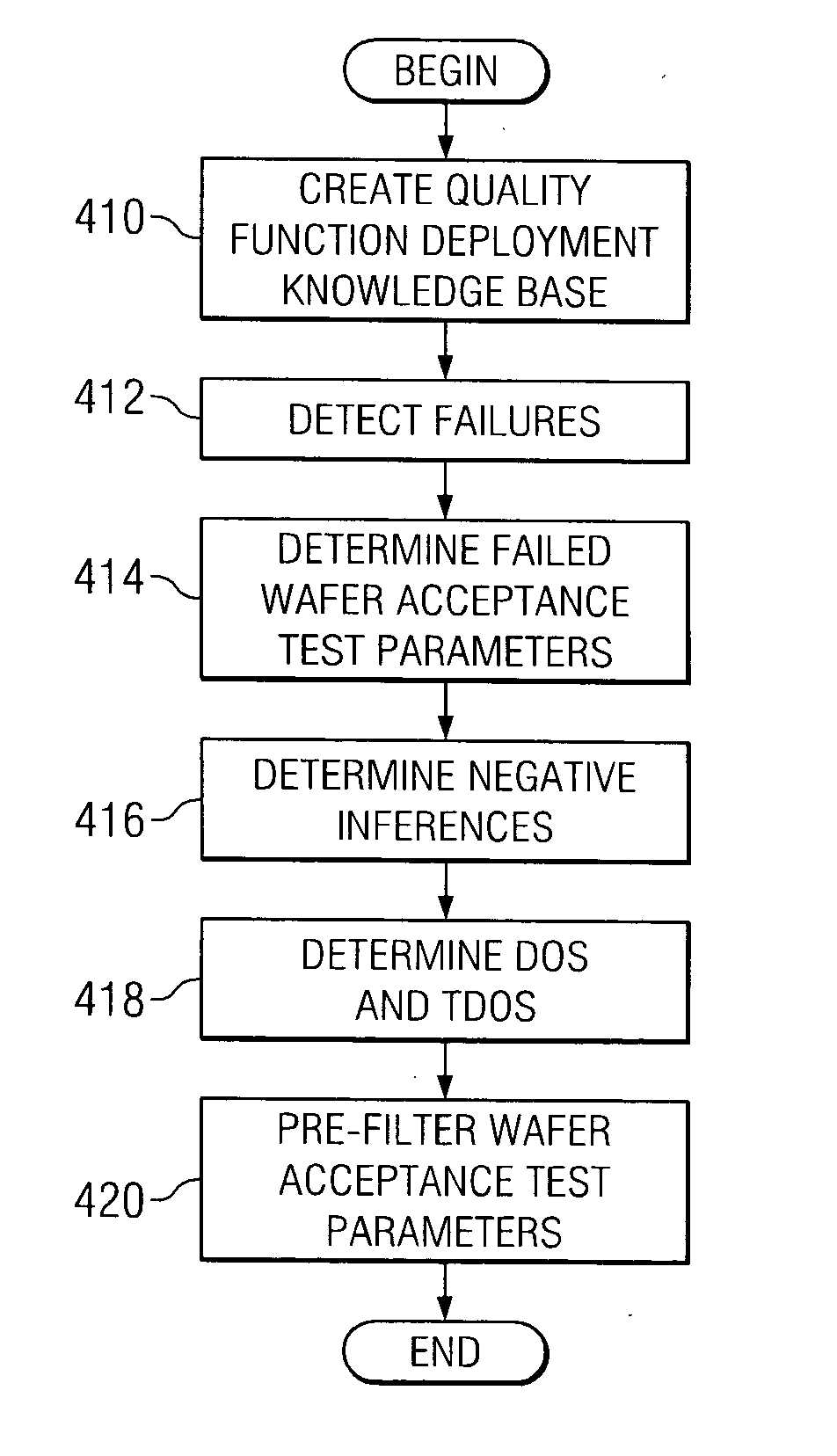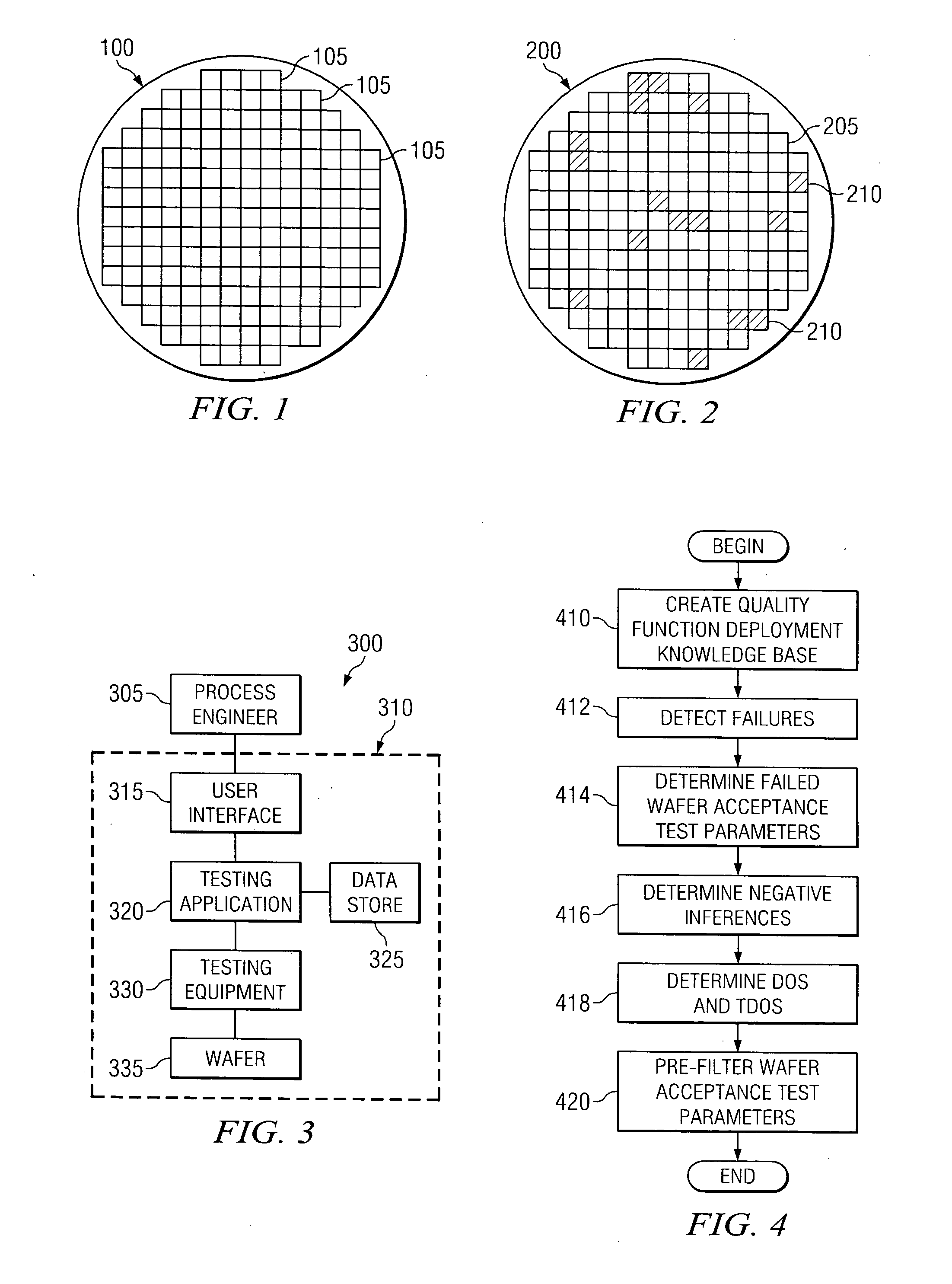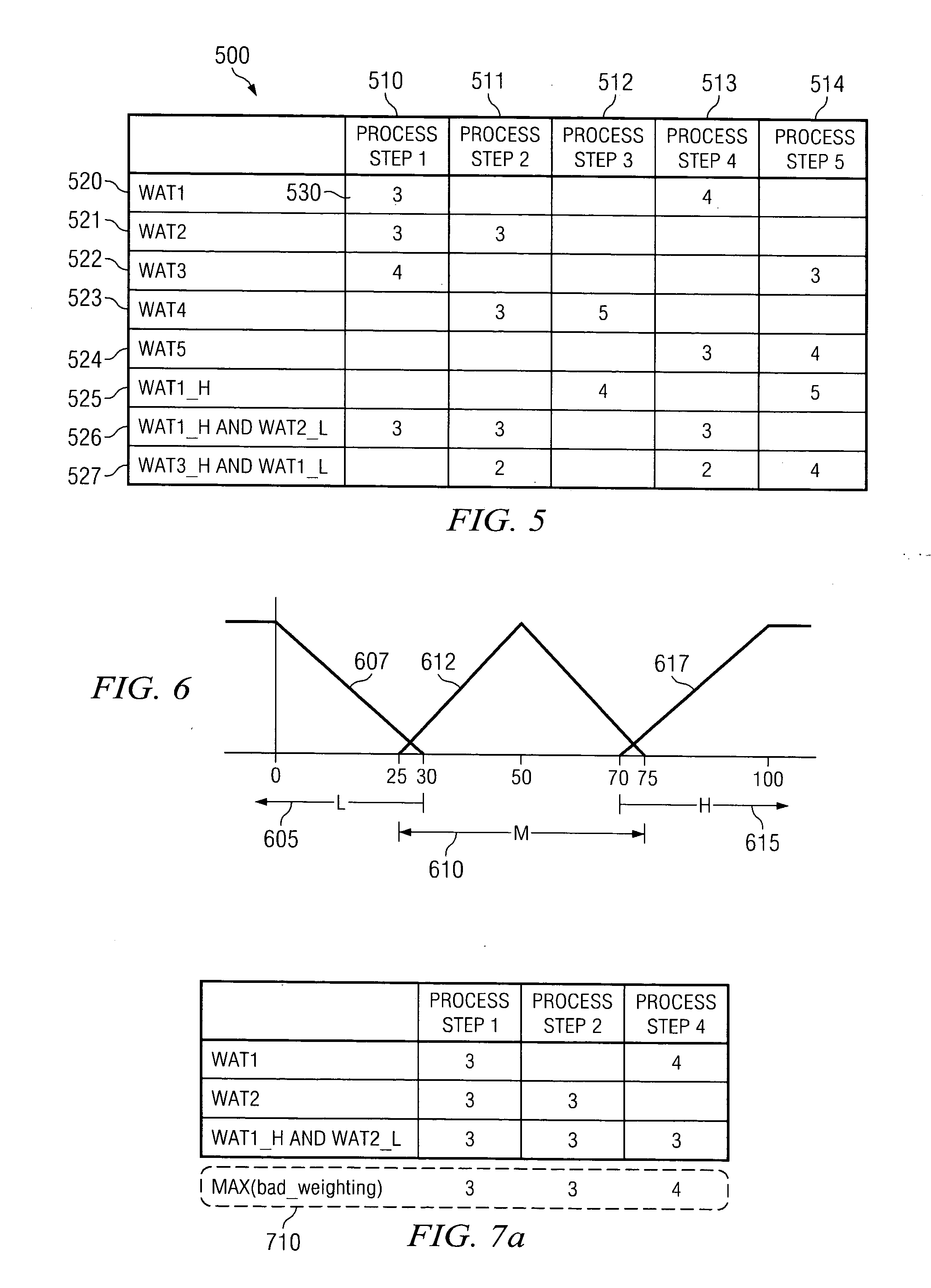Fuzzy reasoning model for semiconductor process fault detection using wafer acceptance test data
a technology of fuzzy reasoning and semiconductors, applied in the field of semiconductor fabrication systems and methods, can solve the problems of process faults that remain in the fabrication process for a long time, process faults may be detected, and the likelihood of process faults occurring on the wafer increases, so as to achieve the effect of easy migration from one product technology to the nex
- Summary
- Abstract
- Description
- Claims
- Application Information
AI Technical Summary
Benefits of technology
Problems solved by technology
Method used
Image
Examples
Embodiment Construction
[0027] The making and using of the presently preferred embodiments are discussed in detail below. It should be appreciated, however, that the present invention provides many applicable inventive concepts that can be embodied in a wide variety of specific contexts. The specific embodiments discussed are merely illustrative of specific ways to make and use the invention, and do not limit the scope of the invention.
[0028] The present invention will be described with respect to preferred embodiments in a specific context, namely a semiconductor fabrication plant. The invention may also be applied, however, to other manufacturing facilities wherein tests of the final product are made and the test data can be used to determine the presence of manufacturing faults along the manufacturing process.
[0029] It is further noted that, unless indicated otherwise, all functions described herein may be performed in either hardware or software, or some combination thereof. In a preferred embodiment...
PUM
 Login to View More
Login to View More Abstract
Description
Claims
Application Information
 Login to View More
Login to View More - R&D
- Intellectual Property
- Life Sciences
- Materials
- Tech Scout
- Unparalleled Data Quality
- Higher Quality Content
- 60% Fewer Hallucinations
Browse by: Latest US Patents, China's latest patents, Technical Efficacy Thesaurus, Application Domain, Technology Topic, Popular Technical Reports.
© 2025 PatSnap. All rights reserved.Legal|Privacy policy|Modern Slavery Act Transparency Statement|Sitemap|About US| Contact US: help@patsnap.com



